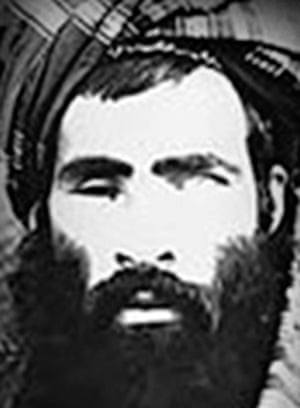The Taliban’s elusive one-eyed leader Mullah Omar lived within walking distance of US bases in Afghanistan for years, and American troops once even searched the house where he was hiding but failed to find a secret room built for him, a new biography claims.
The account exposes an embarrassing failure of US intelligence, which put a $10m bounty on Omar’s head after the 9/11 attacks in the US. Officials repeatedly suggested that, like the al-Qaida leader Osama bin Laden, he was hiding in Pakistan and died there.
It also upends the Taliban’s own account of their movement, revealing how Omar handed over practical control of the insurgency to his deputies in 2001, even though they claimed him as leader for the rest of his life, and for two years after his death in 2013.
While statements issued in his name were scrutinised around the world, he was living as a virtual hermit, refusing visits from his family, filling notebooks with jottings in an invented language and occasionally hiding from US patrols in irrigation tunnels.

Omar regularly listened to the BBC’s Pashtu-language news broadcasts in the evenings, but rarely commented on news of the outside world as it filtered in, even when he learned about the death of Bin Laden, the man whose attack on the US led to the end of Taliban rule.
Bette Dam, a Dutch journalist and writer who has been reporting from Afghanistan since 2006, worked on the biography, Searching for an Enemy, for more than five years. It was published in Dutch last month, and a summary of some findings are being published in Englishby the newly launched Zomia thinktank, which shared the report with the Guardian and the Wall Street Journal.
Dam previously published an account of the former Afghan president Hamid Karzai’s rise to power and is a guest lecturer on Afghanistan at Sciences Po in Paris.
For her research on Omar she visited parts of the country controlled by insurgents and interviewed both Afghan government officials and some of the most senior surviving Taliban members, including the man who hid, protected and fed him until his death.
Jabbar Omari had been a provincial governor when the Taliban ruled Afghanistan, but gave up any active role in the movement to serve as a kind of valet and bodyguard to Omar after 2001.AdvertisementSPONSORED BY TOPGOLF.COM
Sponsored VideoWatch To Learn More
Dam had been told he was the only man who could provide reliable information on Omar’s last years, but had been unable to track him down until Afghan authorities took him into protective custody at the end of last year. They agreed to facilitate an interview in a Kabul safehouse, and he agreed to talk.
Omari came from Zabul province and like the Taliban leader belonged to the Hotak tribe. His connections in the area would be vital to keeping Omar hidden when he fled back to the province of his ancestors after handing operational control of the Taliban to his deputy, Mullah Obaidullah, at a gathering of top Taliban figures in a Kandahar basement.
For the first four years of the insurgency Omar lived in the regional capital, Qalat, within walking distance of the Afghan governor’s compound and the area later chosen to house the main US base for the area, forward operating base (FOB) Lagman. His wives moved to Pakistan and he refused Omari’s offer to bring his son to visit.
